CBSE Class 7 Social Science Chapter 8 How the Land Becomes Sacred Worksheet - Free Download
| Table of contents |

|
| Multiple Choice Questions (MCQs) |

|
| Fill in the Blanks |

|
| Very Short Answer Questions |

|
| Short Answer Questions |

|
Multiple Choice Questions (MCQs)
Q1: What does 'sacredness' mean in religious or spiritual contexts?
a) Something holy or deeply respected
b) A journey to a distant land
c) A place for ordinary activities
d) Something that belongs to a specific religion
Q2: Which of the following is a sacred site for Sikhs?
a) Takht Sri Patna Sahib
b) Mahabodhi Stūpa
c) Dargah Sharif
d) Velankanni Church
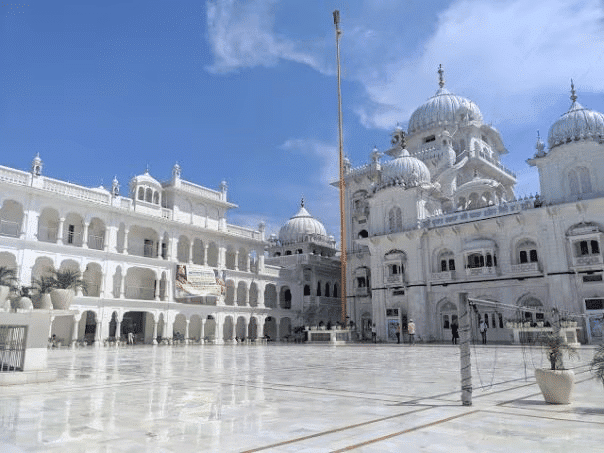 Takht Shri Patna Sahib
Takht Shri Patna Sahib
Q3: What is a pilgrimage in Indian culture known as?
a) Yātrā
b) Tīrthayātrā
c) Kumbh Mela
d) Dham
Q4: Which river is considered a goddess in Hinduism?
a) Ganga
b) Nile
c) Thames
d) Amazon
Q5: What is the significance of Sangams in Indian sacred geography?
a) Where rivers meet, considered sacred
b) Places for religious rituals
c) Ancient trade routes
d) Monasteries for monks
Q6: What does the Char Dhām Yātrā include?
a) Four sacred temples in the Himalayas
b) Pilgrimage to four sacred sites in north, south, east, and west India
c) A journey to the famous monasteries of India
d) Visits to the 12 Jyotirlingas
Q7: Which tree is considered sacred in Hinduism, Buddhism, Jainism, and Sikhism?
a) Banyan tree
b) Peepul tree
c) Mango tree
d) Neem tree
Q8: Which tribe holds the Niyam Dongar hill sacred?
a) Bhils
b) Dongria Khond
c) Gonds
d) Konds
Q9: Which sacred site is related to the myth of the body parts of Sati?
a) Char Dhām
b) Jyotirlingas
c) Shakti Pithas
d) Kumbh Mela
Q10: What is the significance of the Kumbh Mela?
a) A major Hindu festival celebrating the harvest
b) A pilgrimage marking the meeting of rivers
c) A festival held every six years in four locations
d) A tribute to ancient kings
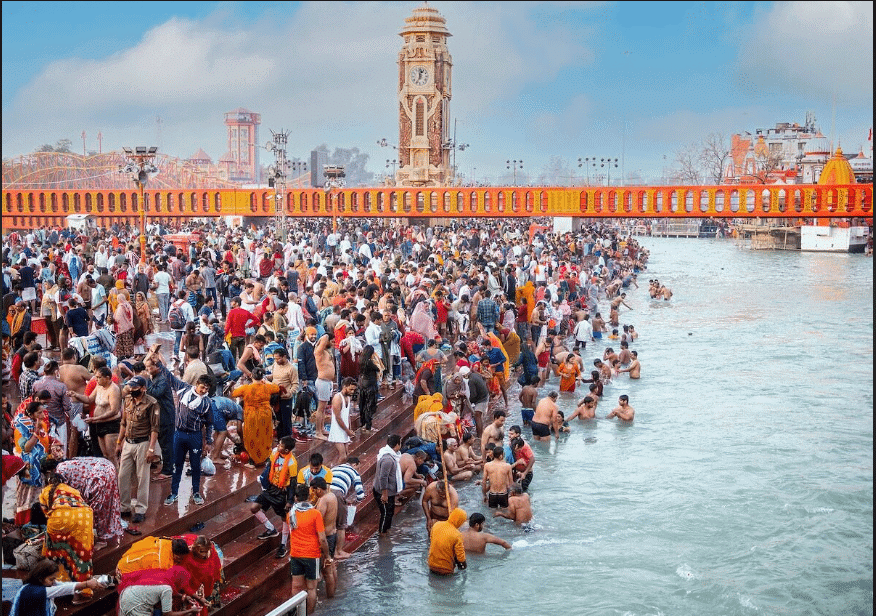 Kumbh Mela
Kumbh Mela
Fill in the Blanks
Q1: Sacredness in India is linked to places like temples, rivers, mountains, and __________.
Q2: The Char Dhām Yātrā connects __________ sacred sites in India.
Q3: The __________ River is considered a goddess in Hinduism.
Q4: __________ is an important pilgrimage site for followers of Jainism in Gujarat.
Q5: __________ is the sacred site in Bodh Gaya where Buddha attained enlightenment.
Q6: In India, the confluence of rivers is called a __________.
Q7: __________ was the major pilgrimage site for Sikhs, connected to Guru Nanak.
Q8: __________ are sacred sites linked to the goddess Shakti in India)
Q9: __________ is the sacred tree under which Buddha attained enlightenment.
Q10: The Kumbh Mela is held every __________ years at four sacred river sites.
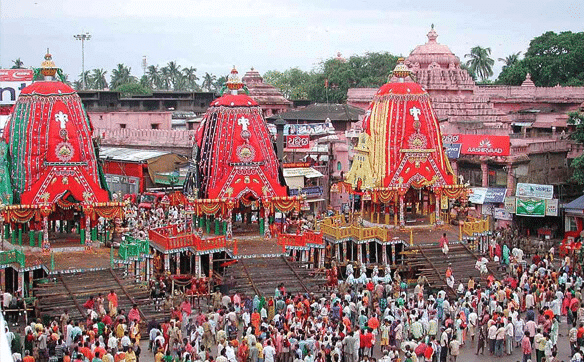 Tirth Yatra
Tirth Yatra
Very Short Answer Questions
Q1: What is a tīrthayātrā?
Q2: Which river is known as "Ganga ji" by many Indians?
Q3: What is a Sangam in Indian sacred geography?
Q4: Who is associated with the Takht Sri Patna Sahib?
Q5: Which tribe considers Niyam Dongar hill sacred?
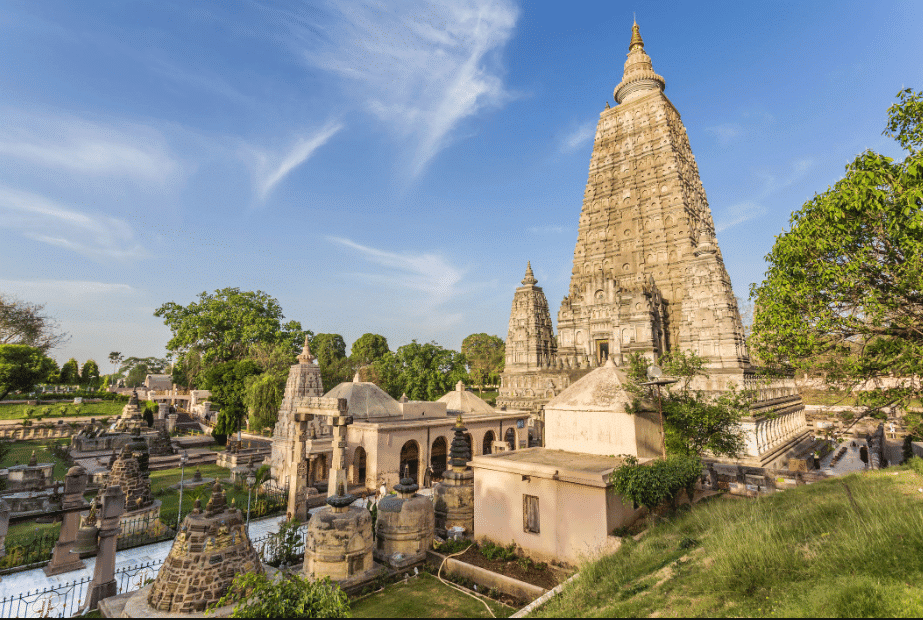 Mahabodhi Stupa
Mahabodhi Stupa
Short Answer Questions
Q1: How does sacred geography help unite India?
Q2: What is the significance of the Kumbh Mela in Indian culture?
Q3: How does sacred ecology contribute to environmental protection?
Q4: Why are rivers considered sacred in India?
Q5: How does sacred geography influence trade in India?
Match the Following
(Match Column A with the correct option in Column B)
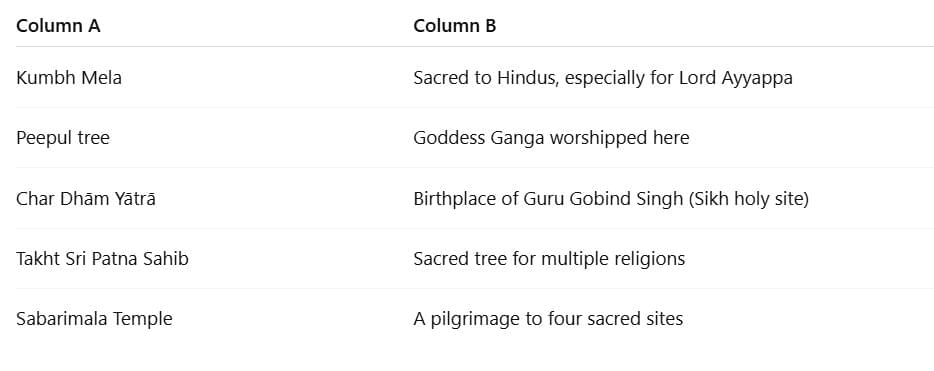
For Worksheet Solutions, go to Worksheet Solutions: How the Land Becomes Sacred
|
1 videos|107 docs
|
FAQs on CBSE Class 7 Social Science Chapter 8 How the Land Becomes Sacred Worksheet - Free Download
| 1. What does the article "How the Land Becomes Sacred" discuss? |  |
| 2. Why is land considered sacred in various cultures? |  |
| 3. How does the article illustrate the process of land becoming sacred? |  |
| 4. What role do rituals play in the sacredness of land? |  |
| 5. Can the concept of sacred land vary among different communities? |  |















